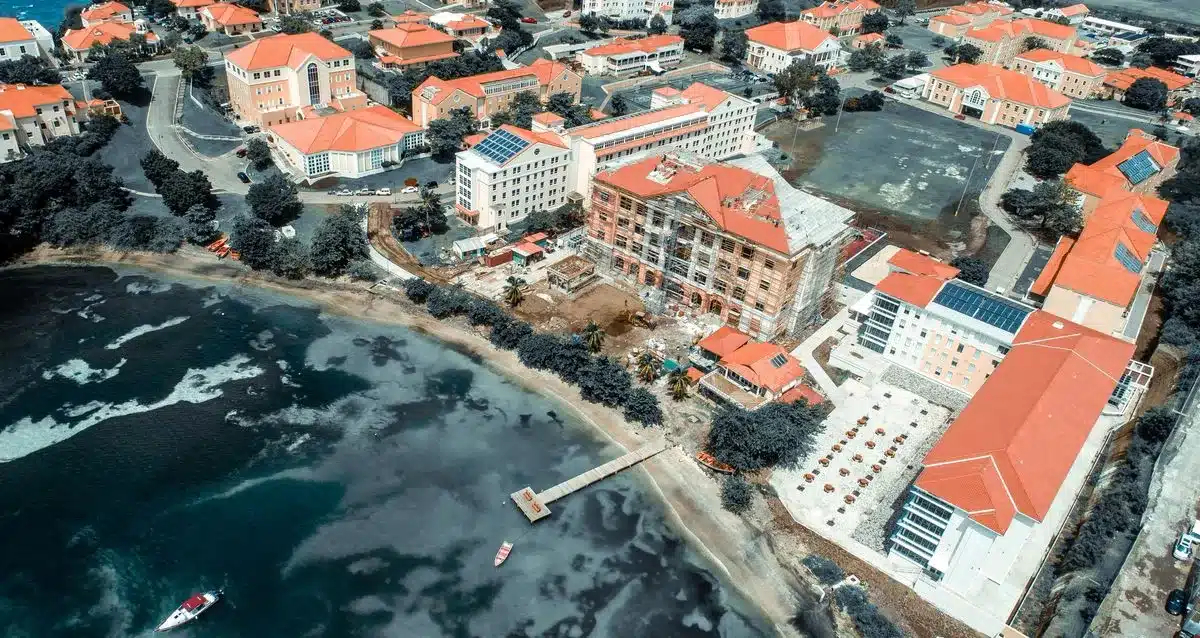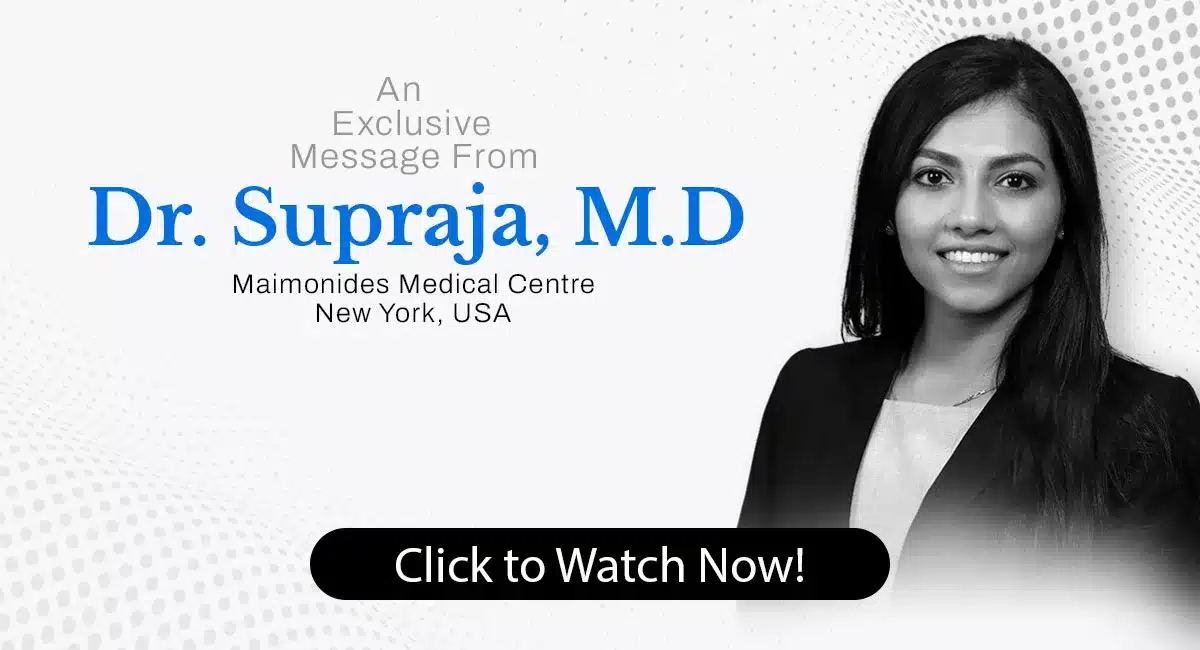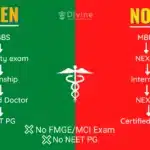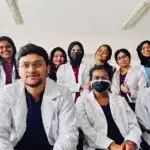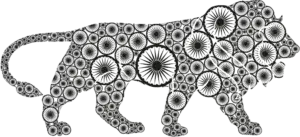Embarking on the journey to become a doctor is a prestigious and ambitious endeavor. In the United States, the path to a medical career is structured through the pursuit of an MD degree, equivalent to the MBBS degree offered in other countries. This comprehensive guide provides insights into the application process, financial planning, choosing the right medical school, and preparing for a career in the U.S. healthcare system, specifically tailored for Indian students aiming to study MBBS (MD) in America.
Key Takeaways
- Indian students must meticulously plan for the application process, including MCAT preparation, crafting personal statements, and securing recommendations.
- Financial planning is essential, with costs ranging from $200,000 to $300,000; exploring scholarships and loans is crucial for managing expenses.
- Choosing the right medical school involves assessing rankings, program strengths, and considering the importance of location and campus culture.
- Understanding the MBBS to MD transition is crucial, including USMLE requirements and gaining clinical experience in the U.S. healthcare system.
- Avoiding common pitfalls is important, such as procrastination, overlooking visa policies, and underestimating the need for cultural adaptation.
Understanding the Application Process for MBBS in America

Eligibility and Admission Requirements
Securing a seat in an MBBS program in America is contingent upon meeting stringent eligibility criteria and navigating a complex admission process. The requirement for taking admission in the USA is that an applicant must have cleared the MCAT, a standardized test that assesses problem solving, critical thinking, and knowledge of natural, behavioral, and social science concepts and principles prerequisite to the study of medicine.
In addition to a successful MCAT score, applicants must demonstrate a strong foundation in science subjects, proficiency in English, and a competitive GPA. Here’s a brief checklist to guide you through the initial phase of the application process:
- Complete prerequisite coursework in biology, chemistry, and physics
- Achieve a competitive MCAT score
- Demonstrate English language proficiency
- Maintain a high GPA
Strategically planning each step of your application will enhance your chances of acceptance into a U.S. medical school.
It’s also essential to understand the specific requirements of your chosen medical schools, as they may vary. For instance, some institutions might require additional standardized tests or have different GPA thresholds. Staying organized and adhering to deadlines is crucial in this competitive landscape.
Preparing for the MCAT: Strategies and Resources
The Medical College Admission Test (MCAT) is a critical component of the medical school application process in the USA. A high score on the MCAT not only demonstrates your readiness for medical education but also can be a deciding factor in your application. Start your preparation early and build a comprehensive study plan that includes a variety of resources.
Essential resources for MCAT preparation include:
- Official AAMC materials, which are indispensable for understanding the format and content of the exam.
- Comprehensive review books that cover all the topics tested on the MCAT.
- Online practice tests to simulate the exam experience and track your progress.
- Study groups or tutoring, which can provide support and accountability.
Consistency in your study routine is crucial. Regular review sessions and full-length practice exams will help you identify areas that need improvement and build the stamina needed for test day.
While preparing for the MCAT, it’s important to balance your study schedule with self-care to prevent burnout. Activities that promote physical and mental well-being are essential during this intense preparation period. Additionally, don’t hesitate to seek advice and support from mentors or professionals who have successfully navigated the MCAT. Their insights can be invaluable in helping you develop effective study strategies and manage the pressures of the exam.
Crafting a Compelling Personal Statement
A personal statement is a critical component of your MBBS application, offering a chance to convey your unique story and dedication to medicine. Reflect on experiences that have shaped your journey, such as research, clinical exposure, or volunteering, and how they align with the medical school’s values. Use anecdotes to make your statement memorable and personal, demonstrating qualities like empathy and resilience.
When writing your personal statement, ensure it resonates with the admissions committee by tailoring it to reflect the school’s ethos. Demonstrate self-awareness by acknowledging both strengths and weaknesses, and use anecdotes to illustrate your points. A compelling personal statement requires introspection and a clear understanding of your motivations for pursuing medicine.
Crafting a compelling personal statement is not merely a formality but a critical step in demonstrating your readiness for the challenges of medical education.
It’s advisable to apply to a range of 15 to 25 medical schools to increase your chances of acceptance. This strategic approach allows you to cast a wide net while ensuring that each application is thoughtfully prepared and tailored to the specific school.
Securing Strong Letters of Recommendation
Letters of recommendation are a critical component of your medical school application, providing a third-party perspective on your abilities and character. Choose recommenders who know you well and can speak to your strengths in a meaningful way. Faculty members, research supervisors, or physicians you’ve shadowed are ideal candidates.
When requesting a letter, provide your recommenders with your CV, personal statement, and a reminder of your notable contributions or experiences with them. This will help them write a detailed and supportive letter. It’s also important to request letters well in advance of deadlines to ensure they have ample time to write a thoughtful recommendation.
A strong letter of recommendation can significantly bolster your application, highlighting your dedication and suitability for the medical profession.
Here are some steps to follow:
- Identify potential recommenders early in your academic career.
- Build and maintain relationships with these individuals.
- Provide them with all necessary information to write a comprehensive letter.
- Follow up politely to ensure letters are submitted on time.
Navigating Deadlines and Organizing Applications
The application process to medical schools in the U.S. is a complex endeavor that requires meticulous planning and organization. Staying organized is not just recommended; it’s essential. Utilize tools like spreadsheets or dedicated software to keep track of each school’s application timeline and prerequisites. Here’s a simple checklist to help you stay on top of your application process:
- Research each medical school’s admissions policies and requirements.
- Note down all the important deadlines in a centralized calendar.
- Prepare and organize documents well in advance, including your MCAT scores, letters of recommendation, and personal statements.
- Regularly update your progress and check off completed tasks.
By meticulously planning and organizing your application components, you can ensure that no detail is overlooked, giving you the best chance at success.
It’s crucial to approach the application process with a strategic mindset. Applying to a mix of reach, match, and safety schools can enhance your prospects. This does not mean compromising on quality; rather, it’s about widening your net within the realm of schools that align with your career goals and academic profile. Finally, ensure that your applications are tailored to reflect your understanding of each school’s ethos, demonstrating that you have done your research and are genuinely interested in what the institution has to offer.
Financial Planning for Medical Education in the USA

Estimating the Costs: Tuition, Living Expenses, and Additional Fees
Understanding the financial implications of studying MBBS in America is crucial for international students. The cost of medical education in the U.S. can be substantial, with expenses including tuition, books, equipment, and living costs. Early financial planning is essential to manage these costs effectively.
- Tuition and Fees: The primary expense is tuition, which can vary widely between institutions.
- Living Expenses: Accommodation, food, and transportation must be budgeted for.
- Additional Costs: Exam fees, application fees, and travel for interviews can add up.
It’s important to consider all potential expenses and seek financial aid opportunities to offset the costs.
Scholarships, grants, and student loans are available to international students, but competition can be intense. Researching and applying for financial aid early can increase your chances of receiving assistance. Additionally, some medical schools offer work-study programs to help students finance their education while gaining valuable experience.
Exploring Scholarships and Funding Options
The pursuit of an MBBS degree in the United States is a significant financial commitment. Scholarships and financial aid are essential in making this goal more attainable for Indian students. These funding options can dramatically reduce the overall cost of medical education, which can range from $200,000 to $300,000.
- Begin your search for scholarships early, utilizing college financial aid offices and scholarship databases.
- Consider both merit-based and need-based scholarships, as well as those targeted towards specific medical fields or countries of origin.
- Don’t overlook service-based scholarships, which may require a commitment to work in underserved areas post-graduation.
Financial constraints are real, but so are the opportunities for aid. Many students miss out on available financial aid because they don’t actively seek it or assume they won’t qualify.
In addition to scholarships, explore loan forgiveness programs and work-study options. Some medical schools offer tailored support, such as the Divine EAC consultancy, which assists Indian students in securing scholarships up to $90,000. Strategic financial planning is not just about managing costs; it’s about securing your future in the healthcare industry.
Budgeting and Financial Management for Students
Embarking on the journey to medical school in the USA comes with significant financial implications. Developing a comprehensive budget is crucial for Indian students to manage their finances effectively throughout their medical education. Start by listing all potential income sources, including savings, family contributions, part-time work, and scholarships. Then, itemize your expenses, considering tuition, accommodation, books, equipment, and living costs.
Estimating the Cost of Medical Education can be daunting, but it’s a necessary step. Tuition fees vary widely between institutions, and when combined with living expenses, the total cost can be substantial. To help with this, many universities offer detailed breakdowns of expenses, which can be used to create a more accurate budget.
Financial planning is not just about covering costs, but also about securing your future. Consider long-term loan repayment plans and potential loan forgiveness programs that may be available to you.
Lastly, it’s important to explore all avenues for financial aid. Scholarships, grants, and work-study programs can provide much-needed relief. Keep a close eye on application deadlines and requirements to maximize your chances of receiving aid.
Understanding Loan Options for International Students
For international students, understanding and accessing loan options can be a critical step in financing their medical education in the USA. Loans can provide the necessary funds to cover tuition and living expenses when scholarships and personal finances are insufficient. It’s essential to research loan options that cater specifically to international students, as they may have different requirements and benefits compared to loans for U.S. residents.
Eligibility Criteria: Often, international student loans require a creditworthy cosigner who is a U.S. citizen or permanent resident. Additionally, students must be enrolled at an eligible school and meet other lender-specific criteria.
Interest Rates and Repayment: Interest rates for international student loans can vary, and it’s important to understand the terms of repayment, which may include grace periods and deferment options.
When considering loans, it’s crucial to compare different lenders and loan products to find the most favorable terms that align with your financial situation and long-term repayment capacity.
Lastly, be aware of the potential impact of currency fluctuations on loan repayments if you plan to return to your home country after graduation. Careful planning and a clear understanding of all financial obligations will help ensure that you can manage your debt effectively post-graduation.
Choosing the Right Medical School: Aligning Aspirations with Institutions

Assessing Medical School Rankings and Reputation
When choosing a medical school in the United States, the rankings and reputation of the institution play a significant role in informing your decision. Rankings provide a snapshot of a school’s overall performance, including factors such as research output, faculty qualifications, and student satisfaction. However, it’s important to look beyond the numbers and understand the context behind them.
Medical school rankings are often based on data that may not fully capture the nuances of the educational experience. For instance, a school’s focus on primary care versus research can influence its position in the rankings. To get a comprehensive view, consider the following aspects:
- The school’s mission and values
- The curriculum and teaching methods
- Clinical rotation opportunities
- Post-graduation residency placement rates
While rankings can guide you, they should not be the sole factor in your decision-making process. Assess each school’s unique offerings and how they align with your career goals.
Remember to also factor in the school’s network and the opportunities it provides for professional development. A prestigious reputation can open doors, but the right fit for your aspirations and learning style is paramount for your medical education journey.
Analyzing Program Strengths and Specializations
When choosing a medical school in the United States, it’s imperative to analyze each institution’s program strengths and specializations. This ensures that your educational experience aligns with your career goals and interests. For example, if you’re drawn to a particular field such as Anesthesiology or Psychiatry, you might consider Harvard Medical School, which is renowned for its programs in these areas. Conversely, the Perelman School of Medicine boasts an impressive acceptance rate and a diverse range of programs, making it an attractive option for many students.
Understanding the nuances of each program is crucial to making an informed decision. Here’s a quick overview of what the Perelman School of Medicine offers:
| Location | QS Ranking | Acceptance Rate | Average MCAT | GPA | Tuition | Seats |
|---|---|---|---|---|---|---|
| Philadelphia, PA | 6 | 3.8% | 521.7 | 3.92 | $59,910 | 612 |
It’s essential to submit applications to as many universities as possible to increase your chances of acceptance.
Additionally, consider the balance between reach, match, and safety schools when applying. This strategic approach can enhance your prospects of acceptance and ensure you have a range of options for your medical education.
Balancing Reach, Match, and Safety Schools
When applying to medical schools in the U.S., it’s essential to have a balanced approach to your school selection. This strategy involves diversifying your applications across reach, match, and safety schools to enhance your chances of acceptance.
- Reach Schools: These are your dream institutions where admission is highly competitive.
- Match Schools: Schools where your qualifications align with the average admitted student.
- Safety Schools: Colleges where you are likely to be admitted based on your credentials.
Strategically selecting schools from each category ensures you have options regardless of the competitive admissions landscape.
Experts often recommend applying to a range of 20-30 medical schools to maximize your acceptance chances. This allows you to cast a wide net while focusing on institutions that are a good fit for your aspirations and qualifications. Staying organized with deadlines and requirements is paramount; use tools like spreadsheets or dedicated software to track your progress.
The Importance of Location and Campus Culture
Choosing the right medical school in the United States goes beyond academic excellence and program offerings; the location and campus culture play a significant role in shaping your medical education experience. Consider the climate, cost of living, and lifestyle of the city or town where the institution is located, as these factors will impact your daily life and studies.
It’s crucial to find a balance between a supportive learning environment and a location that aligns with your personal preferences. Here are some points to consider when assessing the importance of location and campus culture:
- The proximity to healthcare facilities for clinical rotations
- Access to recreational activities and student organizations
- The diversity and inclusivity of the campus community
- Housing options and the overall cost of living
A supportive campus culture not only enhances your learning but also contributes to your well-being and professional development during the demanding years of medical school.
The MBBS to MD Transition: Preparing for a Career in the U.S. Healthcare System

Understanding the USMLE Requirements
Acquiring a deep understanding of the USMLE (United States Medical Licensing Examination) requirements is a pivotal step for MBBS graduates aiming to practice medicine in the USA. The USMLE is a three-step examination for medical licensure in the United States and is an essential component of the MBBS to MD transition.
- Step 1 assesses whether you understand and can apply important concepts of the sciences basic to the practice of medicine.
- Step 2 CK (Clinical Knowledge) tests the medical knowledge and understanding of clinical science necessary for the provision of patient care.
- Step 2 CS (Clinical Skills) evaluates your ability to apply medical knowledge and skills in a practical, patient-oriented setting.
- Step 3, which the Bulletin of Information recommends should be taken after at least one postgraduate training year, measures the ability to apply medical knowledge and understanding of biomedical and clinical science essential for the unsupervised practice of medicine.
Strategic planning is essential from passing the USMLE to securing a residency spot. The competition is fierce, and expectations are high, but with the right approach, success is attainable.
It is important to note that the USMLE Step 2 CS has been discontinued, and its replacement is currently under development. Therefore, staying informed about the latest updates and requirements is crucial for a successful application.
Gaining Clinical Experience in the U.S.
For MBBS graduates aiming to practice medicine in the United States, gaining clinical experience in the U.S. healthcare system is not just beneficial—it’s often a prerequisite for residency programs. This experience provides an invaluable understanding of the clinical environment, patient interactions, and healthcare protocols unique to the U.S.
To ensure a smooth transition, consider the following steps:
- Research and understand the specific admission requirements for your target MD programs.
- Prepare for and complete any required standardized tests, such as the USMLE.
- Seek opportunities for clinical experience and research to strengthen your application.
- Apply to multiple programs to increase your chances of acceptance.
- Engage with a global professional network to gain insights and advice.
Strategic planning is essential from passing the USMLE to securing a residency spot. The competition is fierce, and the expectations are high, but with the right approach, Indian students can achieve their MD dreams in America.
Acquiring clinical experience can be approached through various avenues, such as externships, observerships, or research assistant positions. These opportunities not only enhance your practical skills but also contribute to a more compelling application for residency programs. It’s crucial to start early and be proactive in seeking these experiences to stand out in the competitive field of medicine.
Research Opportunities and Extracurricular Activities
Engaging in research and extracurricular activities is a pivotal aspect of the MBBS to MD transition in the U.S. These experiences not only enrich your medical education but also bolster your residency application. Active participation in research projects can lead to publications, which are highly regarded in the residency selection process. Similarly, involvement in extracurricular activities demonstrates a well-rounded character and a commitment to the medical community.
- Pursue research opportunities in areas of interest or where there is a strategic advantage.
- Join professional organizations and clubs to expand your network.
- Volunteer for healthcare-related community service to gain practical experience.
- Attend medical conferences and workshops to stay updated on the latest advancements.
Engaging with the medical community through research and extracurriculars is an investment in your future as a healthcare professional.
It’s essential to strategically plan your involvement in these activities to align with your career goals. While research may offer insights into cutting-edge medical practices, extracurriculars can provide valuable leadership and teamwork skills. Both elements are crucial for a successful transition and should be approached with equal vigor.
Networking and Professional Development
Networking is a cornerstone of professional development in the medical field, particularly for international students transitioning from an MBBS to an MD in the United States. Building a strong professional network can open doors to mentorship, research opportunities, and potential residency positions. Engaging with affinity groups and participating in learning events and certificate programs are effective ways to expand your professional circle.
To maximize the benefits of networking, consider the following steps:
- Attend medical conferences and seminars to meet peers and industry leaders.
- Join professional medical associations to access resources and networking events.
- Utilize social media platforms like LinkedIn to connect with professionals and alumni.
- Seek mentorship from faculty members or professionals who have navigated the MBBS to MD pathway.
Proactive networking and continuous learning are essential for adapting to the U.S. healthcare system and advancing your medical career.
Remember to leverage every opportunity for professional development, including the curated set of learning events and certificate programs offered by organizations such as the AAMC. These resources can help you find the right opportunity for your career and ensure you remain competitive in the evolving landscape of healthcare.
Avoiding Common Pitfalls: Tips for Indian Students Applying to MBBS Universities in America

Timing Your Application: Why Procrastination is a Risk
The application process for MBBS programs in the U.S. is intricate and time-sensitive. Starting early is not just a recommendation; it’s a strategic move that can significantly impact your chances of acceptance. International students must complete a pre-med program, which may take 1-2 years to complete from a U.S. university before starting a degree in medicine. This underscores the importance of planning and adhering to timelines.
Procrastination can lead to a rushed application, diminishing the quality of essential components such as personal statements and letters of recommendation. To avoid this, here are some steps to ensure timely submissions:
- Research application deadlines for your target universities well in advance.
- Prepare necessary documents such as transcripts, recommendation letters, and personal statements ahead of time.
- Use organizational tools like calendars or apps to remind you of upcoming deadlines.
Submitting your application early can also place you in a favorable position, as some schools review applications on a rolling basis.
Remember, strategic planning is essential for Indian students aspiring to pursue an MBBS in the USA. Early preparation, diverse school applications, and networking are key for success in U.S. medical schools. By planning ahead and submitting applications on time, you can ensure that you have considered all your options and have given yourself the best chance of acceptance.
The Perils of Overlooking Visa and Immigration Policies
For Indian students aiming to study MBBS in America, understanding and adhering to visa and immigration policies is as critical as the academic preparation. Failure to comply with these regulations can lead to denied entry or deportation, jeopardizing years of hard work and dreams of practicing medicine in the U.S. It’s essential to be well-informed about the types of visas available, the application process, and the conditions of your stay.
- Research the specific visa requirements for medical students
- Understand the timeline and steps for visa application
- Stay updated on any changes in immigration policies
- Ensure all documents are accurate and submitted on time
Navigating the complexities of visa and immigration policies requires meticulous attention to detail and proactive planning. By securing the correct visa and maintaining its conditions, students safeguard their educational journey.
Additionally, it’s vital to consider the long-term commitment involved in medical education in America. Students must be prepared for a multi-year endeavor that extends beyond just obtaining a degree, including residency and potential specialty training. Aligning with the right medical school that supports international students can provide valuable resources and guidance throughout this process.
Avoiding a Narrow Focus on Domestic Exams
Indian students often concentrate on domestic exams like NEET, but it’s essential to broaden your scope to include international tests such as the MCAT. Diversifying your exam preparation can significantly enhance your prospects for admission into MBBS programs in the U.S. A common oversight is failing to recognize the importance of these international exams, which are critical in the evaluation process of American medical schools.
- Overlooking international opportunities and the benefits they offer
- Taking gap years without a structured plan for medical preparation
- Not researching enough to align programs with career goals
- Ignoring scholarship opportunities and financial aid
Strategic planning and a comprehensive approach to exam preparation are indispensable for Indian students aiming to pursue an MBBS in America.
In addition to the MCAT, English proficiency tests such as TOEFL or IELTS are often required. It’s crucial to understand the specific requirements of your chosen institutions and prepare accordingly. Here’s a brief overview of the steps to ensure a well-rounded preparation:
- Research and understand the eligibility criteria for medical schools in the U.S.
- Prepare for standardized tests like the MCAT, TOEFL, or IELTS.
- Seek clinical exposure and research opportunities to strengthen your application.
- Apply to a range of schools, including reach, match, and safety options.
- Stay organized with application deadlines and requirements.
The Importance of Cultural Adaptation and Communication Skills
For Indian students pursuing MBBS in America, cultural adaptation is as critical as academic preparation. Understanding such cultural norms can help avoid misunderstandings and adapt behavior and communication style accordingly, fostering a more inclusive and supportive environment.
Adaptation to the cultural context of the U.S. is a continuous process that involves observing, learning, and integrating into the local customs and practices.
Here are 5 Must-Know Cultural Adaptation Tips for Indian Students in the USA:
- Embrace diversity and be open to different perspectives.
- Learn about American social etiquette and daily communication styles.
- Participate in campus activities to immerse yourself in the culture.
- Seek support from cultural associations and student groups.
- Practice English regularly to improve fluency and comprehension.
By prioritizing cultural adaptation and communication skills, Indian students can enhance their educational experience and build meaningful relationships within the medical community.
Embarking on the journey to become a doctor in the US can be fraught with challenges, especially for Indian students. Avoid common pitfalls such as delaying applications, overlooking international opportunities, and not researching enough by exploring the Fast-Track MD Pathway with Divine Education Abroad Consultancy. Our program offers a 97x higher success rate, no entrance exams, and a 5-year medical program that is both affordable and efficient. Don’t let the fear of the unknown hold you back; seize the opportunity for a brighter future. Visit our website now to learn more and take the first step towards a rewarding medical career in the US.
Conclusion
In conclusion, the journey to pursue an MBBS degree in America is a challenging yet rewarding pathway for Indian students with aspirations of becoming globally recognized doctors. This comprehensive guide has provided insights into the application process, the importance of strategic planning, financial considerations, and the nuances of transitioning from MBBS to MD. With the right approach, including early preparation, balancing reach, match, and safety schools, and exploring scholarship opportunities, students can navigate the complexities of the U.S. medical education system. It is essential to stay organized, understand the requirements, and leverage support services to enhance the prospects of success. America MBBS University stands as a testament to the high educational standards and opportunities available to those who are determined to turn their medical aspirations into achievements.
Frequently Asked Questions
What are the eligibility requirements for Indian students to apply for MBBS in America?
Eligibility for Indian students typically includes a strong science background from their 12th-grade education, proficiency in English, a minimum GPA, and preparation for the MCAT.
How much does it cost to study MBBS in the USA?
The cost of medical education in the USA can range from $200,000 to $300,000, covering tuition, living expenses, and additional fees.
Are there any scholarships or funding options available for international students pursuing MBBS in the USA?
Yes, there are scholarships and financial aid options available to help manage the costs of medical education for international students in the USA.
What is the USMLE and why is it important for MBBS graduates in America?
The USMLE (United States Medical Licensing Examination) is a series of exams that MBBS graduates must pass to practice medicine in the USA. It assesses a physician’s ability to apply knowledge, concepts, and principles crucial for effective patient care.
How can Indian students avoid common pitfalls when applying to MBBS universities in America?
To avoid common pitfalls, Indian students should apply early, understand visa and immigration policies, avoid focusing solely on domestic exams, and develop cultural adaptation and communication skills.
What strategies can Indian students use when choosing MBBS universities in America?
Indian students should balance their selection of reach, match, and safety schools, research each school’s strengths, and submit applications to multiple universities that align with their career goals and qualifications.

